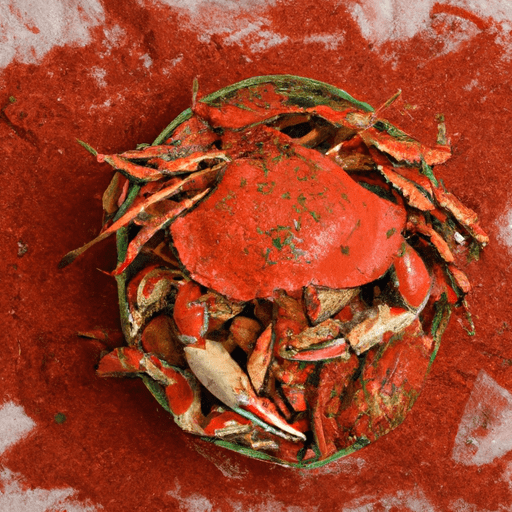The Ultimate Guide to Crab Boil: A Seafood Lover’s Delight
Are you a seafood aficionado looking for a culinary adventure? Look no further than a classic Crab Boil! This mouthwatering dish is bursting with flavor and is a favorite among seafood lovers everywhere. In this blog post, we will take you through a detailed cooking-related description of crab boil, including its taste, common uses in cooking, nutritional value, and some interesting history and facts.
Taste of Crab Boil
Crab boil is a delightful medley of fresh seafood, aromatic spices, and vibrant vegetables. The true beauty of this dish lies in its ability to combine a wide range of flavors. Imagine the perfect balance of salty, spicy, and slightly sweet notes – that’s the taste you can expect from a well-prepared crab boil.
The briny sweetness of the crab and other seafood harmonizes perfectly with the spicy heat of the seasoning. The addition of vegetables, such as corn on the cob and potatoes, further enhances the overall flavor profile. Each bite offers a burst of flavors that will leave you craving for more.
Common Uses in Cooking
Crab boil is an incredibly versatile dish that can be enjoyed in various ways. It is often served as a standalone meal, but it can also be an excellent addition to other recipes. Here are a few common uses of crab boil:
Crab Feasts: Picture a large table covered in newspapers, piled high with steaming crabs, and friends and family eagerly cracking their way to succulent meat. This is the quintessential crab boil experience and a fun social dining event.
Seafood Boils: Crab boil is often used as a base for a seafood extravaganza. Shrimp, clams, mussels, and other shellfish are added to the cooking pot, infusing them with the same enticing flavors.
Salads and Sandwich Fillings: Leftover crab boil ingredients can be repurposed into delicious salads or used as hearty fillings for sandwiches. The combination of tender seafood, crunchy vegetables, and zesty dressing creates a burst of flavors and textures.
Nutritional Value
Crab boil not only tantalizes your taste buds but also packs some nutritional benefits. Seafood, such as crab, is an excellent source of lean protein and is rich in vitamins and minerals. Additionally, an assortment of colorful vegetables provides essential nutrients and dietary fiber. While the exact nutritional content may vary depending on ingredients and portion size, crab boils generally offer a wholesome and balanced meal option.
History and Interesting Facts
The origins of crab boil can be traced back to the southern coastal regions of the United States, particularly Louisiana. It is heavily influenced by Cajun and Creole cuisines, with their unique blend of spices. The idea behind the boil is to create a communal feast where friends and family gather to share a flavorful seafood experience.
Interestingly, the term “crab boil” refers not to the cooking method but to the seasoning used during the process. The traditional seasoning blend usually includes ingredients like cayenne pepper, paprika, garlic, mustard seeds, and bay leaves. These aromatics infuse the seafood and vegetables, creating the distinctive flavors associated with crab boil.
Crab boil is not just a meal; it’s a celebration of seafood that brings people together. Whether you’re enjoying a crab feast, hosting a seafood boil party, or repurposing leftovers, the flavors and aroma of this dish will transport you to the coastal regions where it originated.
So, next time you’re craving a culinary adventure, gather your loved ones, roll up your sleeves, and dive into the irresistible world of crab boil. You won’t be disappointed!
Note: When purchasing ingredients and planning your crab boil, ensure you choose sustainable seafood options and follow local regulations regarding crabbing to protect and preserve our oceans for future generations.
Image Source: Unsplash
Facts about Crab Boil:
Origin: Crab boil is a cooking technique commonly used in the southern United States, particularly in Louisiana. It is believed to have originated in Louisiana in the 18th century and was heavily influenced by the Cajun and Creole cultures.
Common uses: The primary purpose of crab boil is to flavor seafood, especially crustaceans like crabs, shrimp, and crawfish. It typically involves boiling the seafood in a seasoned liquid mixture to enhance its natural flavors.
Seasonings: A typical crab boil mixture often includes ingredients such as bay leaves, garlic, onions, celery, black peppercorns, cayenne pepper, mustard seeds, coriander seeds, and sometimes additional spices like cloves or ginger. These seasonings infuse the cooking liquid and impart their flavors to the seafood.
Technique: To prepare crab boil, a large pot of water is seasoned with the spice mixture and brought to a rolling boil. Then, the seafood is added and cooked until it reaches the desired doneness. Many variations exist, with different proportions and combinations of spices.
Nutritional benefits: Crab boil itself does not add significant nutritional benefits since it primarily serves as a seasoning for the seafood. The nutritional content will vary based on the type of seafood used and the specific spices included in the crab boil mixture.
Historical significance: Crab boil has deep cultural significance, particularly in Louisiana, where it is often associated with social gatherings and communal feasts. It has become a popular tradition during crawfish boils and seafood boils, where friends and family come together to enjoy the flavorful seafood cooked with crab boil seasoning.
Unique properties: Crab boil often imparts a distinct and aromatic flavor profile to the seafood it is used with, lending a spicy, pungent, and slightly sweet taste. The seasoning blend and technique used in crab boil create a unique eating experience that has made it popular, not only in Louisiana but also in various coastal regions.
Remember to always exercise caution when handling and cooking seafood and follow proper food safety guidelines.




Use the share button below if you liked it.
It makes me smile, when I see it.